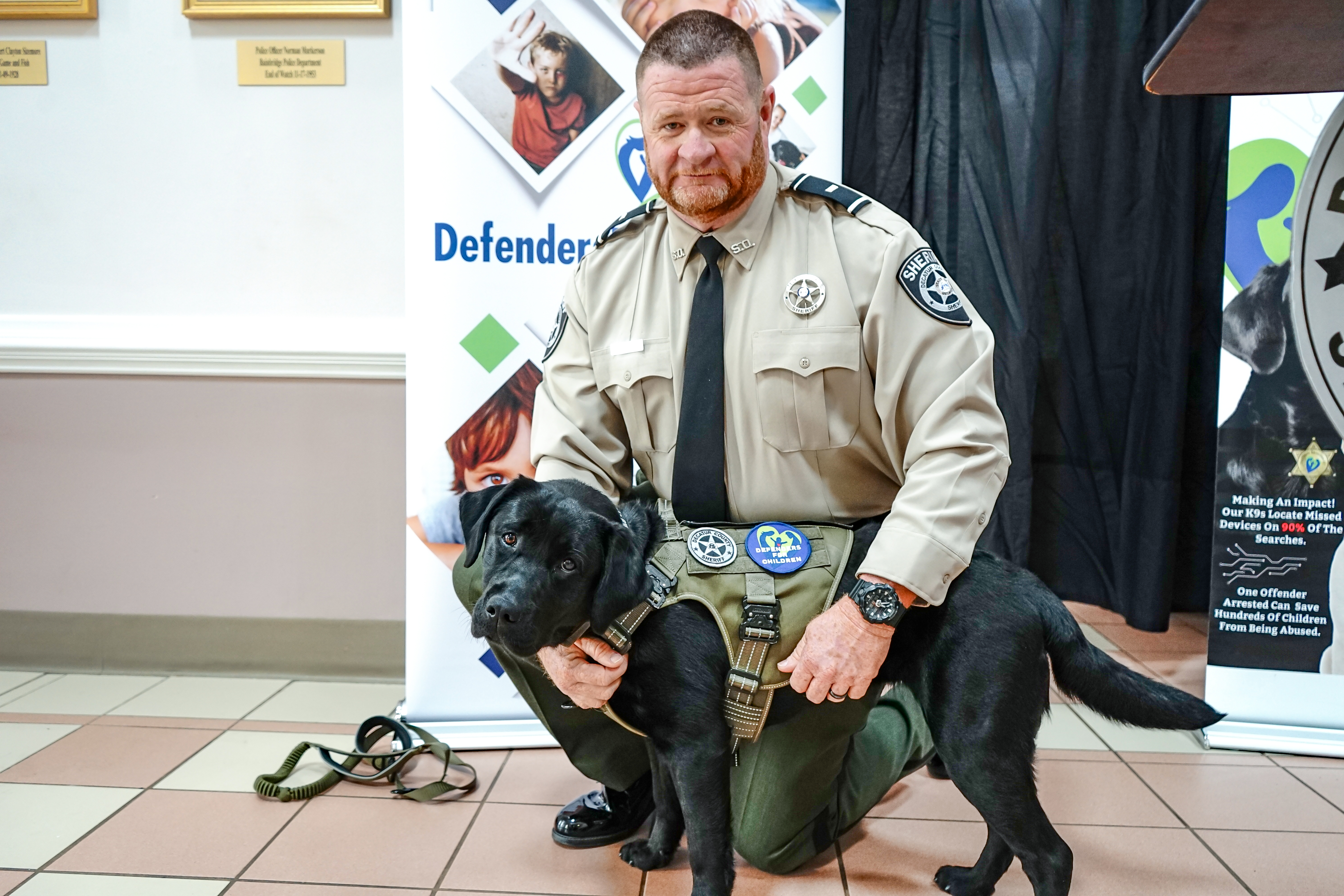Saving the Past for the Future-Part 2
Published 11:45 am Sunday, October 13, 2024
|
Getting your Trinity Audio player ready...
|
Being seven miles from the mainland and opposite Brunswick, Georgia, Jekyll Island is located in the perfect spot. Then, when the steam ship and the train came along, Jekyll Island became very accessible. Now, tourists and settlers were able to go onto the Island. Next, the airplane and the automobile became popular and they made the Island even more accessible to folks, to come and enjoy the beauty of the area.
Therefore, more and more folks came and spread the word about the miles of white sand beaches, and wonderful weather. However, Jekyll Island did not start out to be a tourist attraction. This all got started when two men got together and devised a plan whereby, they could become exceedingly rich.
Allow me to put a lace tablecloth on our tail gate, for we are going to have to use our silverware, not our fingers, when we eat our peanut butter sandwiches. Don’t forget to wipe your mouth on that linen napkin that I placed next to your paper plate!
The coastal lands were too rich in wildlife and beaches and had too good a climate to remain isolated for long. In time, they were discovered by wealthy Europeans and northern industrialists and, on Jekyll Island, they found what the Native Americans had known for 4000 years, that coastal Georgia has an abundance of natural beauty.
In the 1880s, things began to change on Jekyll Island. To make sure that some of the Georgia islands would remain open only to the wealthy and their families and friends, a number of northern industrialists bought several of the Islands and made them their exclusive domain. Jekyll Island was one of these. It was to become a winter retreat for those who wanted good weather during the winter and also a good hunting season.
In 1886, the then head of the du Bignon family, the great grandson, John Eugene du Bignon, along with his brother-in-law, Newton Finney, who was very business savvy, decided to sell the Island to an incorporated group of famous business leaders for $125,000, to be a hunting and recreational club. This is how they started the Jekyll Island Club.
With their knowing so many big business owners, especially those that were in the New York Union Club, du Bignon and Finney, were able to sell memberships to many of these folks, even though they had never even seen the Island. This became a group of 100 men who, at this time, represented one sixth of all the wealth in our Nation. On that list were such names as: J.P. Morgan, the Vanderbilts, the Astors and Rockefellers, the McCormick’s, Bakers, Whitneys, Armour, Albright, Crane, Goodyear, Pulitzer, Macy and Bliss, Charles Maurice, Henry Porter, Richard Teller, Walter Jennings, and many others. Not just anyone could join, and to keep the membership in The Club for the wealthiest patrons, it was set up as an inheritance.
The men who were in charge felt that there was a need for a club house. Construction of what was to be called The Club House, began in 1886. The style of architecture chosen for The Club House was classic Victorian.
Built on the west side of the Island, it began as an apartment house with twelve lavish rooms and twenty, smaller but still very large, and beautiful rooms. The original structure, including the tower, was completed in January of 1888.
The Club House officially opened its doors on January 21, 1888. The first name on The Club House register was that of its president, Henry Howland, who had been elected upon the death of Lloyd Aspinwall. However, his visit lasted only nine days.
Here, in this most exclusive place in our country at this time, the members and their families spent the months of January, February, March and April, vacationing away from the cold and in the tropical temperatures of the southeast every year.
Between 1888 and 1928, some of The Jekyll Island Club’s wealthiest members, built winter homes or as they came to be known, The Cottages, even though some of these were as large as mansions. All but one of these cottages was built in the circle and within walking distance of The Club House, and that was the cottage built by Rockefeller. This area is now called Millionaires Row.
Those that did not have their own cottages, the four story, turreted part of the Club House, had sixty rooms to accommodate visitors.
To get to Jekyll Island, some members chose to go by train. Once in Brunswick, they were met by a private steamer, either the “Hattie” or the “Sybil”, which picked them up at the dock and took them to the wharf on Jekyll Island. These were 14-foot launches, which were also used for fishing excursions and to deliver supplies and mail from Brunswick.
Situated along the Inland Waterway, the most luxurious yachts were anchored at the Jekyll Island wharf. This location made it very convenient for members who preferred to arrive by their private yachts.
The most luxurious yacht there was that of John P. Morgan, whose, “Corsair”, a 34 foot long and 19 foot wide and drafted 17 feet, was too large to dock at the Jekyll Island wharf and had to anchor out in the channel. Then, an escort boat would take the passengers back and forth from the yacht to the shore.
Nearby, was the Jekyll Island Boat House, where the 100-foot steamer the, “Jekyll Island”, was stored during the off season. It was an excursion boat which took passengers for rides along the Georgia coastline, or fishing on a chartered trip.
Evenings were spent in The Club House, dining on elaborate, meals which had many courses. Afterwards, members and their guests would enjoy a game of billiards, or cards. You also could go dancing or set by the fire and chat with the other members. This was what some liked to do the most.
In those early years, the forests on the island were popular for hunting. An abundance of deer, turkey and quail lived among the giant oaks. The island was also stocked with English pheasant and wild boar.
However, in time other sports were added. Along with the fishing, boating and swimming in the Atlantic Ocean, an Olympic size swimming pool was built. There were now carriage rides around the Island, as well as horseback riding. Also available was one of the finest dune golf courses in the world. Tennis was played on either the outdoor or the indoor courts and there also was croquet, which was very popular at this time, and was played on the lawn of the Club House.
In order to keep The Jekyll Island Club private, publicity about the activities was strictly forbidden. Still, during the months when the members were on Jekyll Island, the newspapers would try to find out what was going on, especially if a celebrity would arrive there.
No newspaper men were allowed within a hundred yards from the shores of Jekyll Island. There were boats that attempted to approach, but were forcibly stopped by the Island’s guards. No one was allowed to “scoop the news”.
However, in 1899, everything began to change, when a group of political leaders arranged to have a private meeting on Jekyll Island. They expected complete freedom from publicity, for their behind the scenes “playoff” in the game of politics, which at this time, was between President McKinley, who wanted a second term, and Speaker of the House, Reed, who never saw eye to eye with the McKinley on anything. The referee for this political free for all, was Senator Mark Hanna, a master at manipulation.
However, a cub reporter somehow managed to get a wire through and leaked the news that Reed had been ousted by his party and McKinley would run for a second term. Of course there were a lot of political repercussions caused by this.
The Jekyll Island Club was also where the first telephone call, that went across the United States, was placed by J. D. Rockefeller.
Jekyll Island was not without its tragedies. A yellow fever outbreak in 1894, officially cancelled that season, although some did brave the danger and came anyway. A typhoid fever epidemic resulted in the death of a member’s wife in 1909. A hurricane devastated the Island in 1898, eroding the beaches and destroying the wharf as well as the new bridge that was still under construction.
This time was also the beginning of a major change in members. In 1910, aging members such as Joseph Pulitzer and J. P. Morgan, died during this decade. As time progressed, many more members died.
The 1920’s were prosperous for The Jekyll Island Club. This is when an indoor swimming pool and an upgraded golf course were added. Also, in this decade, many children of the members joined and new members were recruited. They always tried to maintain one hundred memberships.
However, in 1929, the stock market crash pushed the country into turmoil and many of the members had to resign their membership because of financial reasons. To combat this problem, in 1933, members owning a share in The Jekyll Island Club, were reclassified as Founders, and a new type of membership, called an Associate membership, was created. The number of these members was limited to 150. They enjoyed the same island amenities as the Founders did, but the annual dues was less expensive.
In late 1942, with the bombing of Pearl Harbor, the United States was pulled into World War II, The Jekyll Island Club remained open for that season but after closing at the end, it would never reopen again.
By the summer of 1942, many Club employees were drafted into the military and the rationing of food, fuel and supplies would make it difficult for The Club to obtain these items. The plans to open for the 1943 season, were cancelled.
During World War II, the United States government ordered the Island evacuated for security purposes. Therefore, from 1942 to 1946, The Jekyll Island Club maintained a small staff at the Island just to keep it up. They also maintained The Club House and The Cottages, too.
Several military branches were now based on Jekyll Island, including the Coast Guard, Army and Navy. The Army resided in The Jekyll Island Club’s boarding house and the Navy lived in the Tea House. Also, in 1943, the Georgia National Guard did some training there.
After the War, in 1947, is when the state of Georgia bought Jekyll Island to be a state park. The island’s wide beaches, the miles of roads through the forests, the golf course, tennis courts and the swimming pools, along with Jekyll Island’s eleven thousand acres of tropical beauty, were now going to be opened to the public.
Also in 1947, a large investment firm leased many acres of the Jekyll Island Club’s properties on the Island and transformed them. The Jekyll Island Club House was renamed the Jekyll Island Club Hotel, and became one of the finest luxury hotels in the country at this time.
After many buildings were condemned, the state of Georgia bought Jekyll Island from the remaining Club members for $675,000. This now gave the public access to Jekyll’s beaches. For some, the Island sale was a relief, as taxes were mounting and the only source of revenue for The Jekyll Island Club was an Island timber cutting contract.
However, for others, the sale was a disappointment. Some members wanted to redo The Club House and reconstruct the bridge to the Island from Brunswick. Nevertheless, the sale took place, and included the entire Jekyll Island, the structures and furnishings, and everything else.
Join me next week when we will venture into the modern age.






